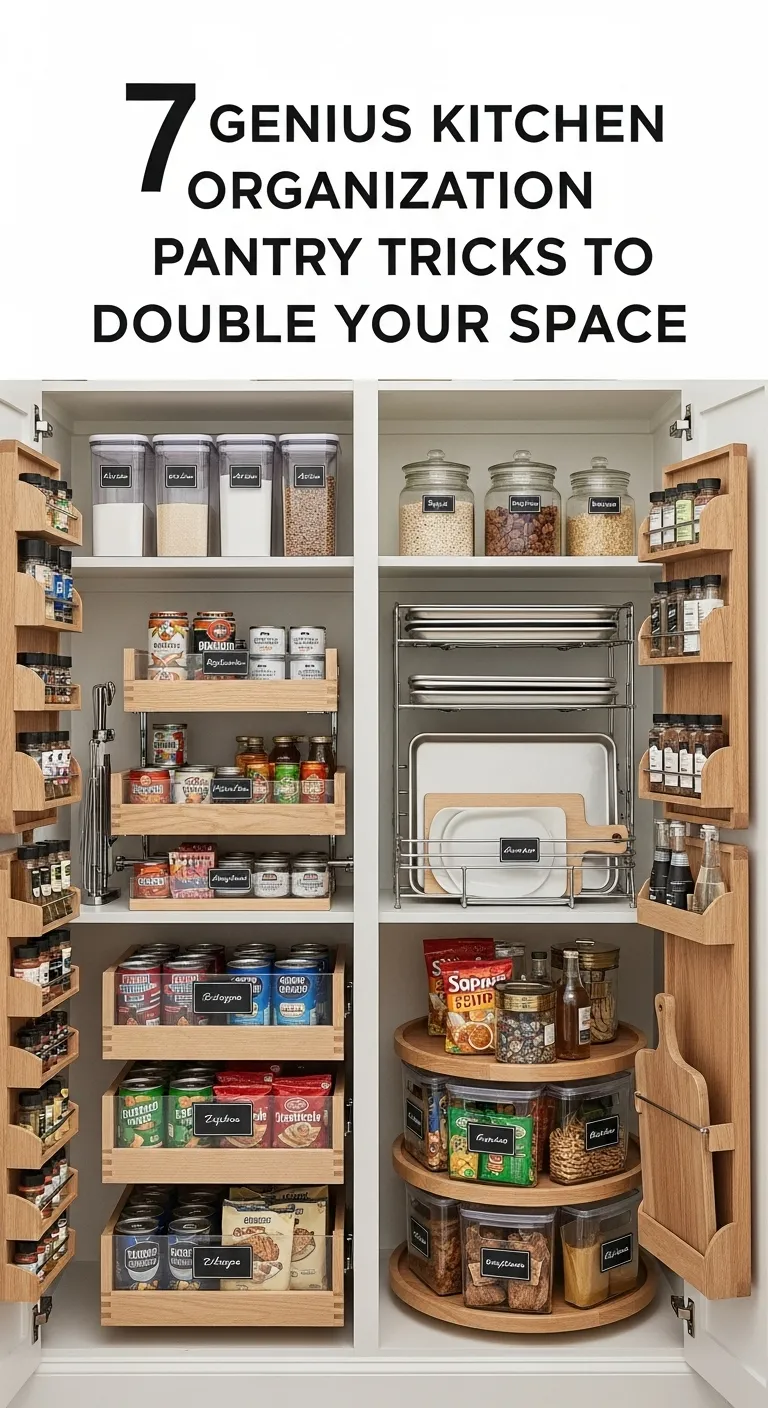My home-cooked meals sometimes feel a little dull. Do you just follow recipes? Perhaps you miss the “why” behind flavors. Many home cooks struggle with dynamic dishes. They feel limited by their spice rack. They do not know how to combine ingredients. Maximum impact seems hard to reach.
Spices and ingredients can seem intimidating. This often leads to bland food. Meals become repetitive. Fear stops kitchen experiments. How do you move beyond instructions? How do you create amazing flavor?
This is your definitive guide. It unlocks unparalleled culinary creativity. It uses The Flavor Bible: A Beginner’s Guide to Pairing Spices. This essential resource transforms your approach to food. Practical culinary tips are included. Clever cooking hacks also help. Every meal becomes an adventure.
I will explore The Flavor Bible in depth. It is an indispensable tool. I will decode fascinating flavor profiles. Actionable steps for practical application follow. A real-world case study is here. Advanced tips for mastering aromatic spices are next. I include key 2025 trends. Prepare to elevate your home cooking flavor enhancement.
Here are the main sections of your guide.
Understanding The Flavor Bible: Your Culinary Compass
What is The Flavor Bible? Karen Page and Andrew Dornenburg wrote this book. It is more than a cookbook. It lists ingredient compatibility. It guides flavor pairing techniques. The book organizes ingredients alphabetically. It suggests complementary flavors for each. This includes herbs, spices, and other items.
Why is it so helpful for home cooks? It removes all guesswork. It offers proven ingredient compatibility. This stops kitchen mistakes. It sparks new culinary creativity. You can try new things. It moves beyond standard recipe ideas. It builds your cooking confidence. You will improvise and adapt. You feel secure in your choices. This tool helps with mastering flavor combinations.
You need to grasp key ideas. Dominant flavors are main tastes. Think of a core ingredient’s essence. Complementary flavors add to the dominant taste. They can contrast or balance it. Aromatic components are also key. Aromatic spices, herbs, and scents matter. They play a crucial role. Taste science basics explain tastes. Sweet, sour, salty, bitter, and umami exist. They interact to make balanced flavors.
Here is a tip. Pick one favorite ingredient. Try chicken, broccoli, or apples. Explore its pairings in The Flavor Bible. Do not fear new tastes.
Decoding Flavor Profiles: Beyond Just Taste
We move past five basic tastes. We explore many flavor profiles. Earthy, floral, nutty, and fruity exist. Pungent, spicy, woody, and herbal also exist. Aromatic spices build these layers. They make complex and deep flavors.
Consider a flavor combination. It has an anatomy. Building layers adds depth. Ingredients and spices bring dimension. Think about contrast and harmony. Opposing flavors can work. Sweet and sour, or spicy and cool. Sometimes seek seamless blends. This creates balanced flavors. We also look at umami flavor. It is the savory fifth taste. Maximize it for plant-based flavor. This is big in 2025.
Try these exercises with the book. Exercise 1: Use the “Core Ingredient” approach. Pick salmon, chickpeas, or cauliflower. Find 3-5 complementary flavors. Exercise 2: Try the “Spice-First” approach. Choose fenugreek or sumac. Find ingredients it pairs with. Then build your dish. Exercise 3: Explore cuisines. Understand flavor pairing techniques. These are common in global dishes. This expands your palate and culinary creativity.
I see a 2025 trend here. We are enhancing plant-based flavor. The Flavor Bible helps plant-based dishes. It adds structure and depth. Meat often brings umami or richness. Focus on spices, herbs, and vegetables. Mushrooms add umami. Smoked paprika gives warmth. Nutritional yeast adds cheesy notes.
Start a flavor journal. Write down combinations you tried. Note what worked well. This boosts your cooking confidence.
Practical Application: Mastering Spice Pairing with The Flavor Bible
Here is how to use The Flavor Bible.
- Identify Your Base Ingredient: What is the dish’s star?
- Consult The Flavor Bible: Look up your ingredient. It is listed alphabetically.
- Scan for Bolded Entries: These are top suggestions. They are the strongest pairings.
- Consider Your Desired Cuisine/Mood: Do you want Asian? Mediterranean? Latin American? Or a new flavor profile?
- Select Complementary Elements: Choose herbs and aromatic spices. Pick aromatics and other ingredients.
- Experiment and Taste: This step is key. Start with small amounts. Adjust as you go. Build truly balanced flavors.
Here are some common examples.
* Tomatoes: Basil, oregano, garlic, balsamic. Mozzarella and olives pair well.
* Lentils: Cumin, coriander, turmeric. Coconut milk, lemon, spinach work. These are great for plant-based recipes.
* Pork: Apples, sage, rosemary. Mustard, fennel, prunes are good.
* Broccoli: Garlic, lemon, chili flakes. Cheddar and nutmeg are good.
You can create spice blend recipes. Use The Flavor Bible to build blends. Make a dry rub for roasted vegetables. Create a new curry powder. An example is a “North African Spice Rub.” It uses suggestions for lamb or vegetables. Cumin, coriander, ginger, cinnamon, paprika, black pepper.
The Flavor Bible also helps with ingredient substitution. It suggests alternatives. These have similar flavor profiles. This helps when you miss an item.
Here is a tip. Start with a tiny amount. You can add more spice later. You cannot take it away.
Case Study: Transforming a Weeknight Meal with Flavor Bible Principles
Maria is a busy parent. She is 38. She loves home cooking. Her healthy weeknight meals felt dull. Roasted chicken and vegetables were repetitive. She wanted exciting, quick dinners. She avoided complex recipe ideas. She did not want processed ingredients.
Maria used The Flavor Bible: A Beginner’s Guide to Pairing Spices. She wanted to elevate her chicken and sweet potatoes. She aimed for a sweet and savory twist.
Here was her process.
1. Consulting The Flavor Bible: Maria looked up “chicken.” She also looked up “sweet potato.”
2. Chicken Pairings: She saw ginger, cinnamon, orange zest. Garlic and thyme were also listed.
3. Sweet Potato Pairings: The book showed cinnamon, nutmeg, maple syrup. Orange and ginger were there too.
4. Creating a Marinade/Rub: She mixed minced ginger. A pinch of cinnamon went in. Orange zest, garlic powder, dried thyme, salt. A drizzle of olive oil. She used this for both chicken and sweet potatoes. This was a true cooking hack. It saved time.
5. Cooking: She roasted chicken pieces. Sweet potato cubes joined them. All on one sheet pan. This made a convenient quick meal.
The meal was amazing. The chicken tasted warm and aromatic. It had a citrusy depth. The sweet potatoes were caramelized. They had a comforting spice blend. Her family loved it. Her children are often picky eaters. They said it felt “restaurant-quality.” This proved gourmet cooking at home is possible. Maria gained huge cooking confidence. She now uses The Flavor Bible often. She experiments with flavor profiles. Her family’s meals are more fun. Healthy eating is enjoyable. This supports sustainable cooking practices. Every ingredient matters.
This case shows the book’s value. It is not just for chefs. It helps everyday home cooks. It solves common meal dilemmas. It makes recipe ideas dynamic. It makes them more delicious.
Elevating Your Everyday Cooking: Advanced Tips & 2025 Trends
Go beyond the obvious pairings. Try less common suggestions. The Flavor Bible has intriguing ideas. Chocolate and chili work. Avocado and mint are good. Strawberries and black pepper too. Mushrooms and coffee can pair. This helps grow your culinary creativity. It shows your personal style.
Integrate 2025 trends. Think about sustainable cooking practices. Smart spice blend recipes help. Clever flavor pairing techniques also help. Make “ugly” produce shine. Use less-loved ingredients. This cuts food waste. It promotes mindful eating. Spices make simple ingredients exciting. Use local and seasonal items.
Consider hyper-personalized flavor. Use The Flavor Bible to tailor dishes. Meet individual preferences. Match dietary needs. Support health goals. You can improve plant-based flavor. Do this without too much fat or sugar.
Explore global flavors. Use The Flavor Bible. Understand different flavor profiles. Adapt them to your pantry.
Build your spice pantry. Start with versatile aromatic spices. Store them well. Keep them fresh. Organize your spices. This helps kitchen organization. Find high-quality spices. Source them ethically.
Develop your flavor intuition. Tasting is very important. Taste throughout cooking.
Frequently Asked Questions
What is The Flavor Bible?
It is a unique culinary guide. Karen Page and Andrew Dornenburg wrote it. It lists ingredient compatibility. It helps you pair flavors. This book is a trusted resource.
How does it help beginners?
It removes guesswork for you. It suggests proven pairings. This builds cooking confidence. You learn mastering flavor combinations. It makes cooking easier.
Can I use it for plant-based meals?
Yes, absolutely. It is great for plant-based flavor. It boosts umami in vegetables. You create deep, rich tastes. It makes vegetarian food exciting.
How do I start using it?
Pick a main ingredient. Look it up alphabetically. See its suggested pairings. Start with small amounts. Always taste as you go.
What if I lack an ingredient?
The book helps with ingredient substitution. It suggests similar flavor profiles. You find good alternatives easily. This saves your dish.
How can I build my spice collection?
Start with essential aromatic spices. Store them well for freshness. This helps kitchen organization. Good spices are key. Buy small amounts first.
Does it help with new spice blend recipes?
Yes, it does. You can create custom blends. It guides your choices. This sparks culinary creativity. Make your own signature mixes.
How can I trust the pairings?
The book is well-researched. It gathers expert opinions. It is a trusted guide. I use it myself daily. It has stood the test of time.
Conclusion
The Flavor Bible offers a true gift. It helps you understand flavor profiles. You gain cooking confidence. This guide empowers you greatly. It helps with mastering flavor combinations. Your kitchen journey transforms.
I have used this book for years. It boosts my culinary creativity. It makes home cooking flavor enhancement simple. Every meal becomes an adventure. You learn to trust your flavor intuition. This is a powerful skill.
Keep experimenting with aromatic spices. Seek balanced flavors. Try new recipe ideas. Embrace ingredient substitution. This guide supports sustainable cooking practices. It enhances plant-based flavor too.
Cooking is a lifelong discovery. Enjoy every step. Find joy in every dish. Your culinary journey starts now. I wish you delicious meals ahead.



